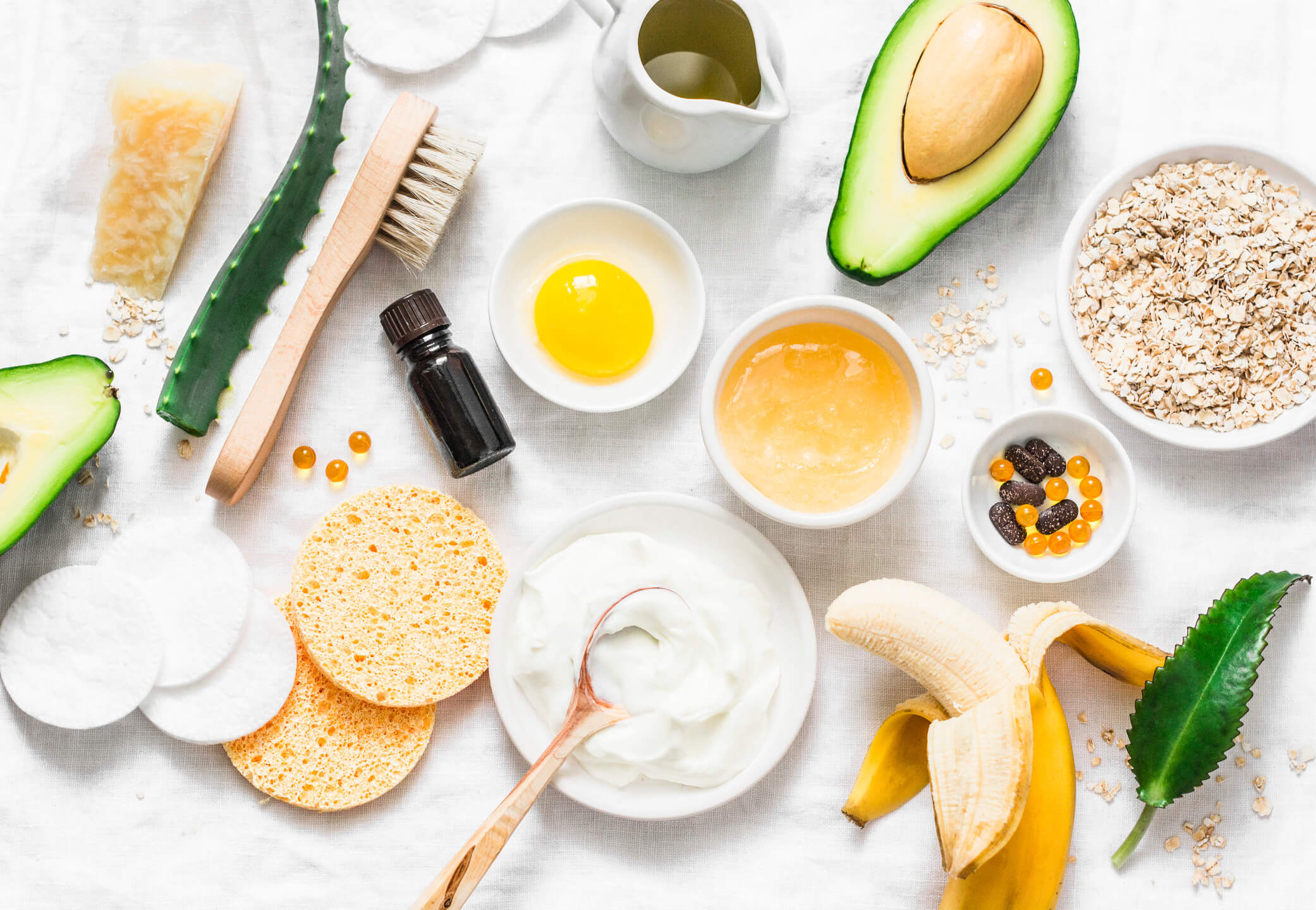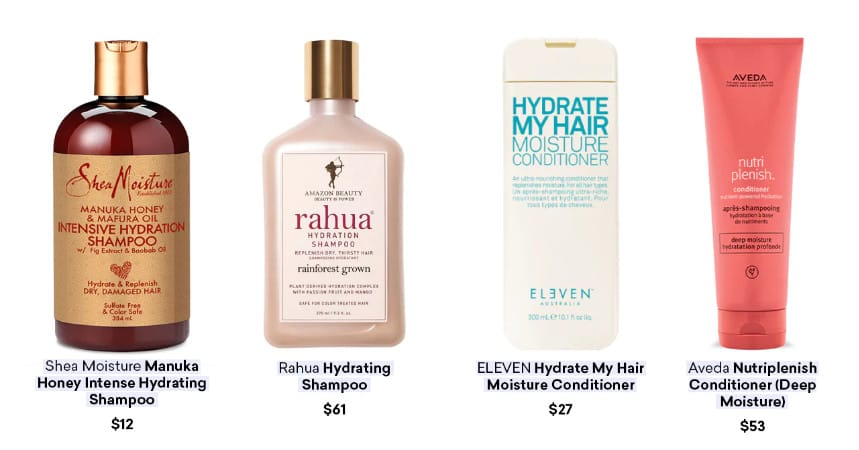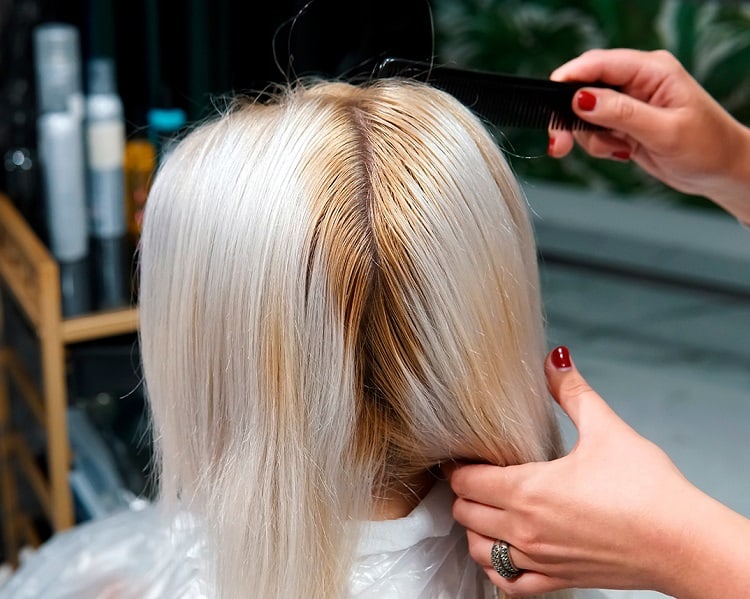Whether you’re coloring your hair yourself at home or using the services of a stylist, most hair-lightening products contain some amount of bleach. Everything has its own price and changing up hair color with bleach doesn’t an exception. Though bleach is still one of the simplest, fastest ways to remove pigment from your hair strands, it also makes hair more fragile, more dehydrated, and more susceptible to severe breakage. Breakage, frizz, and dryness are just some of the side effects that you may experience after bleaching your hair but this is why we’re here: find the best products, tips, and natural remedies in the search for how to hydrate hair after bleaching. This article will give you tips to help restore your hair’s strength and softness after using bleach.
1. Tips To Hydrate Your Hair After Bleaching
The disruption of the hair cuticle – the layer that locks in moisture – contributes to bleached hair looking “fried” or frizzy. While your hair cuticle rebuilds, you can use other products to seal your hair and help restore some gloss and shine.
How To Hydrate Hair After Bleaching #1: Apply A (Natural) Protein Treatment to Prevent Hair Loss

After bleaching, keeping your hair healthy will require two main upkeeps: hydration and hair loss prevention. Because hair becomes so much more delicate post-process, it’s crucial for those with already thin hair to find ways to hydrate hair naturally after bleaching. To prevent hair loss, opt for a cuticle-strengthening protein treatment. Often grouped together as “keratin treatments”, these can be done in a salon, but often at high prices with hefty chemical ingredient lists. Opt for a protein-packed hair treatment at home like this egg yolk mask and store-bought protein packs.
Hydrate Hair After Bleaching #2: Apply Oil Treatment

You can opt for coconut, argan, or almond oil to moisturize your hair. A few drops of these oils can go a long way to give your hair some life. Coconut oil can also work to seal your hair and prevent protein loss. All you need to do is rub some coconut oil together between your palms to warm the oil up before applying it to dry frizzy spots as well as your ends. After styling, use a few drops of Argan oil to seal in moisture and add shine to your hair. Argan oil is rich in antioxidants, which can help protect your hair from further damage. Last but not least, each day before you head out the door apply a few drops of Almond oil to your hair. Almond oil is saturated with proteins as well as vitamin E, which can bind to your hair and make your strands stronger. It may also fill in gaps in your hair strands that leave it prone to breakage after bleaching.
How To Hydrate Hair After Bleaching #3: DIY Hair Masks & Rice Water Rinse


Hair masks with moisturizing ingredients such as avocado, honey, and egg white can restore your hair’s softness and elasticity. You can use hair masks made from simple kitchen ingredients two or three times a week until your hair’s condition improves. Besides it, rinsing your hair with water you have used to boil rice may help make your hair strands stronger. Rice water contains inositol, which you can use to repair hair strands from the inside out.
Read Now: 7 Best DIY Hair Masks To Try At Home
Hydrate Hair After Bleaching #4: Use A Hydrating Shampoo & Moisturizing Conditioner

There is a significant difference between hydrating and moisturizing hair, but when hair is dry and damaged, both are essential! Choose a shampoo with humectant ingredients (Hydrating Shampoo) like glycerin and honey to penetrate deep into the cortex of the hair. A moisturizing conditioner aimed at the mid-lengths and ends will seal in the moisture by coating your hair shaft in emollients. Always look for paraben and sulfate-free products, as these harmful ingredients are extremely drying on delicate hair.
How To Hydrate Hair After Bleaching #5: Avoid Heat Styling

You got your dream blonde (or you’re closer than ever) and now you want to style it in all its glory. Unfortunately, right after bleaching, your hair is especially dry and vulnerable to heat styling damage. Ideally, cut back on how often you blow-dry, curl, or straighten your hair with hot tools in the weeks after a bleach. You can refer to the heatless curling method or if it is too difficult and you have no choice but to instead a heated styling tool, make sure to use heat-protectant products on the whole hair.
Hydrate Hair After Bleaching #6: Trim Your Hair Every 6-8 Weeks

The ends of our hair are usually where breakage can first show up and when those splits haven’t been trimmed in a while, the breakage works its way up the strands. Trimming off split ends can help breathe new life into hair that has been damaged by bleach. Ask your hairdresser to trim off 2 to 3 inches – it might feel like a weight lifted off of your shoulders.
How To Hydrate Hair After Bleaching #7: Be Careful With Chlorine
After the bleach has weakened your hair strands, chlorine can exacerbate the problem and make your hair even weaker. Chlorine can also give bleached hair a brassy blond, greenish hue, or carrot-orange tint. Rinse your hair with cool water right before your slip into the pool or any other chlorinated water source. Rinse your hair again directly after spending time in chlorinated water. You might want to use a swim cap to protect your locks in the 2 weeks right after bleaching your hair.
2. How Often Should You Bleach?

Bleaching your hair on a regular basis will cause more and more damage. Bleach your hair no more than once every two months. The American Academy of Dermatologists recommends giving your hair a break between processing sessions of 8 to 10 weeks. When it comes time to re-bleach your roots, only apply it to new growth and avoid re-bleaching your entire head. Bleaching your entire head repeatedly will result in hair breakage and loss.
3. Conclusion
Bleach damage to hair is common, but there are natural remedies you can try to restore the strength and flexibility of your hair strands. The true cure may be a little patience, as it may take some time for your hair to regain its shape. If your hair does not begin to regain its shape and stability within 6 weeks, you may need to seek the assistance of a professional hairstylist.


 BEST SELLING PRODUCTS
BEST SELLING PRODUCTS Wig Hair
Wig Hair WHOLESALE PRICE
WHOLESALE PRICE Contact us
Contact us
